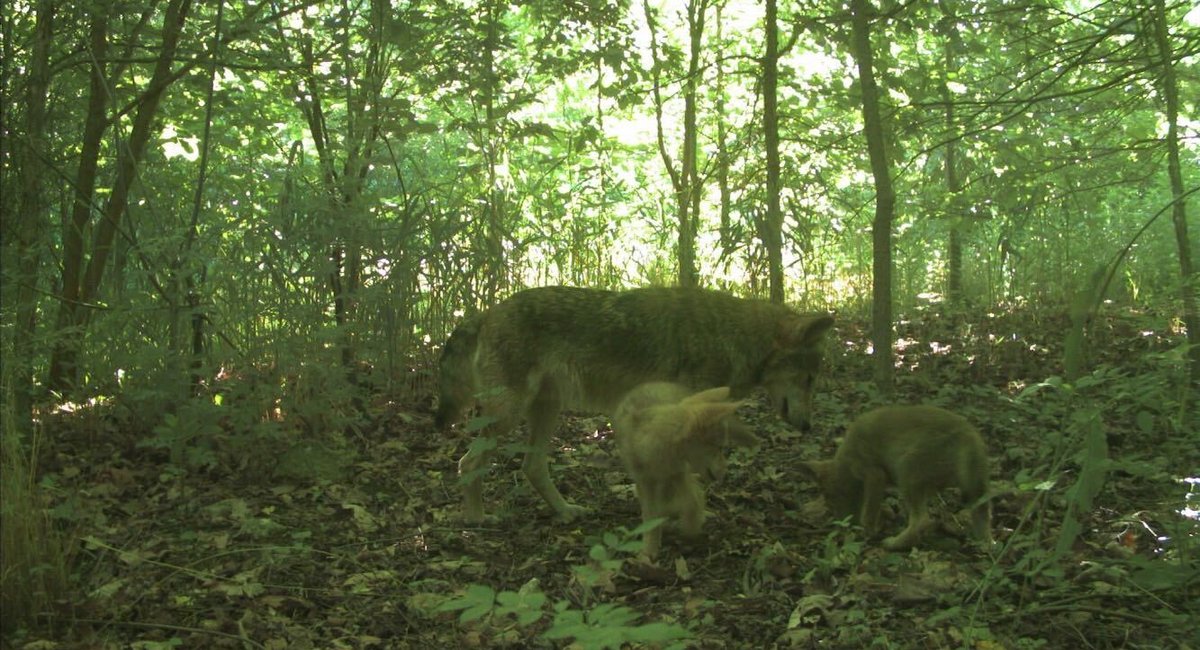After four years prowling Central Park solo, a coyote has been joined by a companion that recently arrived from parts unknown, wildlife observers say.
Researchers at the Gotham Coyote Project say the match likely happened late last year, when they first spotted the female. They held off on confirming there are now two coyotes in the 840-acre greenspace because the wily creatures are easy to double-count and images from field cameras are analyzed months after they are initially taken. Experts said the new couple is the latest sign that the urban carnivore is expanding its territory into more city parks.
“The overall story is pretty clear: Give them [coyotes] enough time and they’ll be all over the place,” coyote project co-founder Chris Nagy said.
His group’s trail cameras provided official documentation of a rumor that’s circulated among Central Park wildlife lovers for most of the year: The male coyote was no longer a bachelor.
The male coyote arrived in the park in 2019. The Gotham Coyote Project believes his new female mate likely followed the same path, trotting by following train tracks along the West Side Highway, moving from one greenspace to the next until settling in the most wooded sections of Central Park.
Young coyotes venture out on their own from a parent’s den when they’re between six months and 1 year old.
So far, the coyotes have enjoyed a child-free romance. Nagy and his fellow coyote-lovers have not found a den or any pups.
“A lone coyote may dig one [den] in the hopes that they’ll meet a mate, but they don’t really use them unless they have the pups,” Nagy said. “They’ll sleep under a bush or in a log or something.”
It’s possible the city life has deterred the pair from settling down and becoming parents.
“[In] Central Park, you have a lot of eyes, I don’t see a way for them to hide a den,” Nagy said.
A coyote caught on a trail camera in Central Park.
Gotham Coyote Project
Nagy has a theory that the coyotes attempted to create a den, but were unable to maintain it because Central Park is so busy. Coyotes reuse dens every year. But if humans find it, a pair will permanently abandon the site and search for a new home.
Nagy and his crew say they’ll continue monitoring their trail cameras for signs the coyotes have had a litter.
Over in Alley Pond Park in Queens, Nagy says a canine pair is tending to its first litter, which was born in the spring.
“We’ve had a single coyote there [in Alley Pond] for a few years. Finally got a second one and sure enough, we did get pictures of pups,” Nagy said.
Coyotes’ territory has been expanding into the Big Apple for more than 20 years, mostly by way of Westchester. Human development has displaced the critters and forced a migration across Bronx parks on the city’s border and into surrounding boroughs and Long Island.
Gotham Coyote Project co-founder Chris Nagy shows off a trail camera in a city park.
Rosemary Misdary/Gothamist
Gotham Coyote Project has been tracking the elusive canines since 2010. The research team relies on data from field cameras attached to trees in city parks, citizen reports and coyote poop. Nagy’s team analyzes movements, diet and DNA using their scat, and has been able to trace their expansion from Westchester, into the Bronx and beyond. Nagy says the coyotes in the city – and ones expanding from Queens into Long Island – are all related.
Coyotes are territorial creatures, so parks will have one or two coyotes or a single family.
Like many New Yorkers, local coyotes have had to adjust their housing standards. Some have been spotted at golf courses in Queens and Long Island, which are suitable because they tend to be fenced off with wooded areas and frequented by a relatively low number of humans.
Alley Pond Park is ideal for a coyote family, Nagy said, because there aren’t many visitors and parts are not easily accessible to humans.
And while Central Park isn’t home to coyote pups at the moment, Nagy said there’s a chance that’ll change.
“If I see more than one adult coyote in a place where we haven’t seen previously, then I’ll expect a den that spring,” Nagy said.
